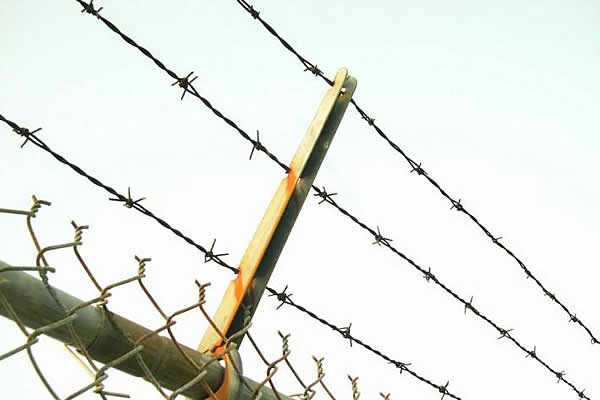 TEL:
+86-13102802206
TEL:
+86-13102802206
 Email:
fencenetting@china.com
Email:
fencenetting@china.com
 Language
Language
 TEL:
+86-13102802206
TEL:
+86-13102802206
 Email:
fencenetting@china.com
Email:
fencenetting@china.com
 Language
Language


Metal Cage Rock Retaining Walls A Sustainable Solution for Erosion Control
In the world of civil engineering and landscape architecture, retaining walls play a pivotal role in managing soil erosion, preventing landslides, and creating stable structures on sloped terrains. Among the various types of retaining walls, metal cage rock retaining walls have emerged as an innovative and sustainable solution for both residential and commercial applications. This article explores the functionality, benefits, and installation process of metal cage rock retaining walls.
What are Metal Cage Rock Retaining Walls?
Metal cage rock retaining walls are structures constructed using steel cages filled with natural stones, gravel, or boulders. These cages, often referred to as gabions, serve as a form of containment, allowing for the effective management of loose materials while providing structural support. The design not only ensures stability but also fosters a natural aesthetic that can integrate seamlessly into various landscapes.
Functionality
The primary purpose of a retaining wall is to stabilize soil and prevent erosion. Metal cage rock retaining walls achieve this by allowing water to drain through the gaps between the stones, reducing the pressure build-up behind the wall. This drainage capability is essential in preventing flooding and soil saturation, which can lead to wall failure if not properly managed. Additionally, the weight of the stones in the cages helps resist the lateral soil pressure exerted by the earth behind the wall, ensuring long-term stability.
Benefits
1. Eco-Friendly One of the most significant advantages of metal cage rock retaining walls is their environmental benefits. Using natural stone minimizes the carbon footprint compared to traditional concrete walls, which require extensive cement production. Furthermore, these walls promote biodiversity; gaps between the rocks can serve as habitats for various plant species and small animals.

2. Aesthetic Appeal Metal cage rock retaining walls offer a rustic and natural look, making them an appealing choice for landscaping. Unlike conventional concrete walls, these walls can blend harmoniously with the natural surroundings, enhancing the overall visual appeal of the area.
3. Cost-Effectiveness While the upfront costs of installation can vary, metal cage rock retaining walls generally prove to be cost-effective in the long run due to their durability and minimal maintenance requirements. Once built, they can last for decades with little to no repairs needed.
4. Versatile Application These walls can be adapted to various applications, including residential gardens, commercial properties, and public infrastructure projects. They are particularly beneficial in areas prone to erosion or where aesthetic considerations are paramount.
Installation Process
The installation of metal cage rock retaining walls involves several steps, beginning with the site preparation. The area must be cleared of any debris and vegetation, followed by the excavation of a trench to place the cages. Steel cages are then assembled and positioned according to the planned layout. Once in place, the cages are filled with selected stones or gravel, ensuring proper compaction to create a robust structure.
After filling the cages, the top should be leveled, and if desired, additional stones can be placed to enhance the visual character of the wall. Proper drainage measures, such as perforated pipes, can also be installed to ensure water flows away from the wall.
Conclusion
In summary, metal cage rock retaining walls represent a sustainable and effective solution for managing soil erosion and enhancing landscape aesthetics. With their eco-friendly materials, cost-effectiveness, and versatility, they are increasingly favored in both residential and commercial projects. As we continue to seek environmentally responsible building practices, the popularity of metal cage rock retaining walls is likely to grow, making them a prominent choice for future construction endeavors.